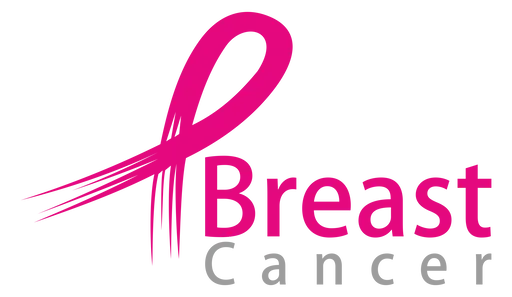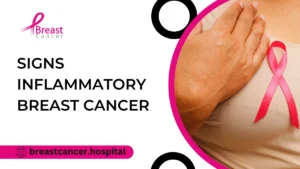Hormone therapy for breast cancer is an essential treatment option, especially for those diagnosed with Estrogen Receptor Positive Breast Cancer. This therapy helps block or lower hormone levels that fuel cancer growth. The main keyword, Hormone therapy is central to understanding the process and benefits. Hormone therapy after cancer is an essential topic that we’ll cover in detail, along with insights into hormone medication for breast cancer.
What is Hormone Therapy?
Hormone therapy for breast cancer uses medications to reduce the body’s hormone levels, specifically estrogen and progesterone. For patients with Estrogen Receptor Positive Breast Cancer, where these hormones promote the growth of cancer cells, this therapy is highly effective. This treatment is particularly effective for hormone receptor-positive breast cancers, where the cancer cells have receptors for these hormones.
What Are the Side Effects of Hormone Therapy?
Like all treatments, hormone therapy for breast cancer treatment can have side effects. These side effects occur because the therapy alters hormone levels in the body. Common side effects include:
- Hot flashes: Sudden feelings of warmth, often accompanied by sweating.
- Fatigue: Persistent tiredness, even after rest.
- Joint pain: Hormone therapy, particularly with aromatase inhibitors, can cause aches and pains in the joints.
- Mood changes: Emotional fluctuations, including depression or irritability.
- Bone thinning: Some hormone therapies may cause bone loss, increasing the risk of fractures.
- Nausea and vomiting: A common side effect, especially when treatment is first started.
- Vaginal dryness: Estrogen reduction can lead to dryness and discomfort.
Discussing these side effects with a healthcare provider helps manage them effectively and adjust treatment as needed.
How Does It Work?
There are two primary methods in hormone therapy:
- Blocking Hormone Receptors: Medications like tamoxifen prevent estrogen from binding to breast cancer cells.
- Lowering Hormone Levels: Drugs such as aromatase inhibitors reduce estrogen production in postmenopausal women, slowing cancer growth.
These treatments are especially vital in Ovarian Suppression for Breast Cancer, as reducing estrogen production significantly impacts cancer progression.

Types of Hormone Therapy for Breast Cancer
- Selective Estrogen Receptor Modulators (SERMs): SERMs, such as tamoxifen, block estrogen receptors on breast cancer cells. These medications are typically taken orally and are effective in reducing the risk of recurrence in premenopausal and postmenopausal women.
- Aromatase Inhibitors: Aromatase inhibitors, including anastrozole, letrozole, and exemestane, lower estrogen levels in postmenopausal women. These drugs are taken orally and are often prescribed after initial treatments like surgery or chemotherapy.
- Ovarian Suppression for Breast Cancer: For premenopausal women, hormonal activity can be suppressed through surgery or medication, effectively reducing the chances of recurrence.
How is Hormone Therapy Used to Treat Breast Cancer?
Hormone therapy is typically used for breast cancers that are Estrogen Receptor Positive, meaning the cancer cells rely on estrogen to grow. This therapy is applied in several phases:
- Before Surgery (Neoadjuvant Therapy): In some cases, hormone therapy is used before surgery to shrink the tumor, making it easier to remove.
- After Surgery (Adjuvant Therapy): Post-surgery, hormone therapy is used to kill any remaining cancer cells and reduce the risk of recurrence.
- For Advanced Cancer: In cases of metastatic breast cancer, hormone therapy can help control the disease and improve quality of life.
This treatment can be used alone or in combination with other therapies, such as chemotherapy cancer or radiation.
Benefits
- Reducing Recurrence Risk: One of the primary benefits of hormone therapy after breast cancer is the significant reduction in the risk of cancer recurrence. Studies have shown that hormone therapy can decrease the likelihood of breast cancer returning by up to 50%.
- Improving Survival Rates: Hormone therapy is not only lowers recurrence rates but also improves overall survival rates. By targeting hormone receptor-positive cancer cells, this treatment helps ensure long-term remission and better outcomes for patients.
- Managing Symptoms: Hormone therapy can also help manage symptoms associated with breast cancer and its treatment. For example, medications like tamoxifen can alleviate hot flashes and other menopausal symptoms in premenopausal women.
Hormone Therapy After Breast Cancer
- Long-Term Treatment Plans: Hormone therapy after breast cancer often involves long-term treatment plans, typically lasting five to ten years. This extended duration helps ensure that any remaining cancer cells are effectively targeted and eliminated.
- Monitoring and Adjustments: Patients undergoing hormone therapy require regular monitoring to assess the treatment’s effectiveness and manage any side effects. Adjustments to medication types or dosages may be necessary to optimize outcomes.
- Quality of Life Considerations: While hormone therapy is highly effective, it can also have side effects such as hot flashes, joint pain, and bone density loss. It’s essential to discuss these potential impacts with your healthcare provider to manage and mitigate them effectively.
May also Know: Prostate Cancer, Immunotherapy
Drugs That Block Estrogen Receptors
Several drugs are available to block estrogen receptors or reduce estrogen production, offering powerful tools in hormone therapy for breast cancer treatment. These drugs include:
- Tamoxifen: A selective estrogen receptor modulator (SERM) that blocks estrogen from binding to cancer cells, particularly used for both pre- and postmenopausal women.
- Aromatase inhibitors: Drugs like letrozole, anastrozole, and exemestane that block the production of estrogen in postmenopausal women by inhibiting the aromatase enzyme, which converts androgens into estrogen.
- Fulvestrant: An estrogen receptor antagonist that degrades the receptor, used primarily for advanced or metastatic estrogen receptor
What Are the Side Effects of Hormone Therapy?
Like all treatments, hormone therapy for breast cancer treatment can have side effects. These side effects occur because the therapy alters hormone levels in the body. Common side effects include:
- Hot flashes: Sudden feelings of warmth, often accompanied by sweating.
- Fatigue: Persistent tiredness, even after rest.
- Joint pain: Hormone therapy, particularly with aromatase inhibitors, can cause aches and pains in the joints.
- Mood changes: Emotional fluctuations, including depression or irritability.
- Bone thinning: Some hormone therapies may cause bone loss, increasing the risk of fractures.
- Nausea and vomiting: A common side effect, especially when treatment is first started.
- Vaginal dryness: Estrogen reduction can lead to dryness and discomfort.
- Discussing these side effects with a healthcare provider helps manage them effectively and adjust treatment as needed.Positive Breast Cancer.
These drugs are central to the success of hormone therapy after breast cancer, especially for post-surgery patients who are at risk of recurrence.
Recovery After Hormone Therapy for Breast Cancer
Recovery from hormone therapy for breast cancer involves adapting to both the physical and emotional challenges posed by the treatment. While the therapy is effective, it often comes with side effects that require management.
Key Aspects of Recovery:
- Regular Monitoring:
- Frequent check-ups ensure the therapy’s effectiveness and monitor for recurrence.
- Blood tests may be conducted to assess estrogen levels and overall health.
- Managing Side Effects:
- Common side effects include hot flashes, joint pain, mood changes, and fatigue.
- Strategies such as exercise, dietary changes, and stress management can help alleviate symptoms.
- Bone Health:
- Aromatase inhibitors can lead to bone density loss, so calcium and vitamin D supplements or bone-strengthening medications might be recommended.
- Emotional Support:
- Counseling, support groups, or therapy can be beneficial for coping with the emotional impact of treatment.
Lifestyle Tips for Recovery:
- Maintain a balanced diet rich in fruits, vegetables, and lean proteins.
- Engage in regular physical activity to boost energy levels and improve bone health.
- Avoid smoking and limit alcohol consumption to reduce recurrence risk.
Risks of Hormone Therapy for Breast Cancer
While hormone therapy for breast cancer treatment is effective, it comes with potential risks and side effects, including:
- Hot flashes and night sweats
- Fatigue and mood swings
- Bone density loss (osteoporosis)
- Weight gain
- Blood clots and stroke (in rare cases)
- Joint pain and stiffness
Patients undergoing ovarian suppression for breast cancer may also experience menopausal symptoms, affecting their quality of life.
Hormone Therapy and Breast Cancer Prevention
Hormone therapy for breast cancer is not only a treatment option but also a preventive measure for individuals at high risk of developing the disease. Estrogen receptor-positive breast cancer is the most common subtype, and it thrives on the presence of estrogen. Hormone therapy targets this hormone, either by blocking its effects or reducing its production.
Key Points in Prevention:
- Tamoxifen: A selective estrogen receptor modulator (SERM) commonly prescribed for premenopausal women. It blocks estrogen from binding to receptors in breast tissue.
- Aromatase Inhibitors (AIs): Such as anastrozole, letrozole, and exemestane, these are primarily for postmenopausal women, inhibiting the enzyme aromatase to reduce estrogen levels.
- LHRH Agonists: These drugs, like goserelin, suppress ovarian function, decreasing estrogen production in premenopausal women.
Hormone therapy for breast cancer prevention is often recommended for individuals with a strong family history of breast cancer or genetic predispositions, such as BRCA1 or BRCA2 mutations.
Conclusion
Hormone therapy for breast cancer plays a vital role in the treatment and management of hormone receptor-positive breast cancers. By understanding the different types of hormone therapy, their benefits, and what to expect during treatment, patients can make informed decisions about their care. Hormone therapy remains a cornerstone in treating Estrogen Receptor Positive Breast Cancer. It significantly reduces the chances of recurrence and improves survival rates. By understanding how hormone therapy works and what to expect, patients can make informed decisions about their care.
Read also : Invasive Ductal Carcinoma (IDC)




